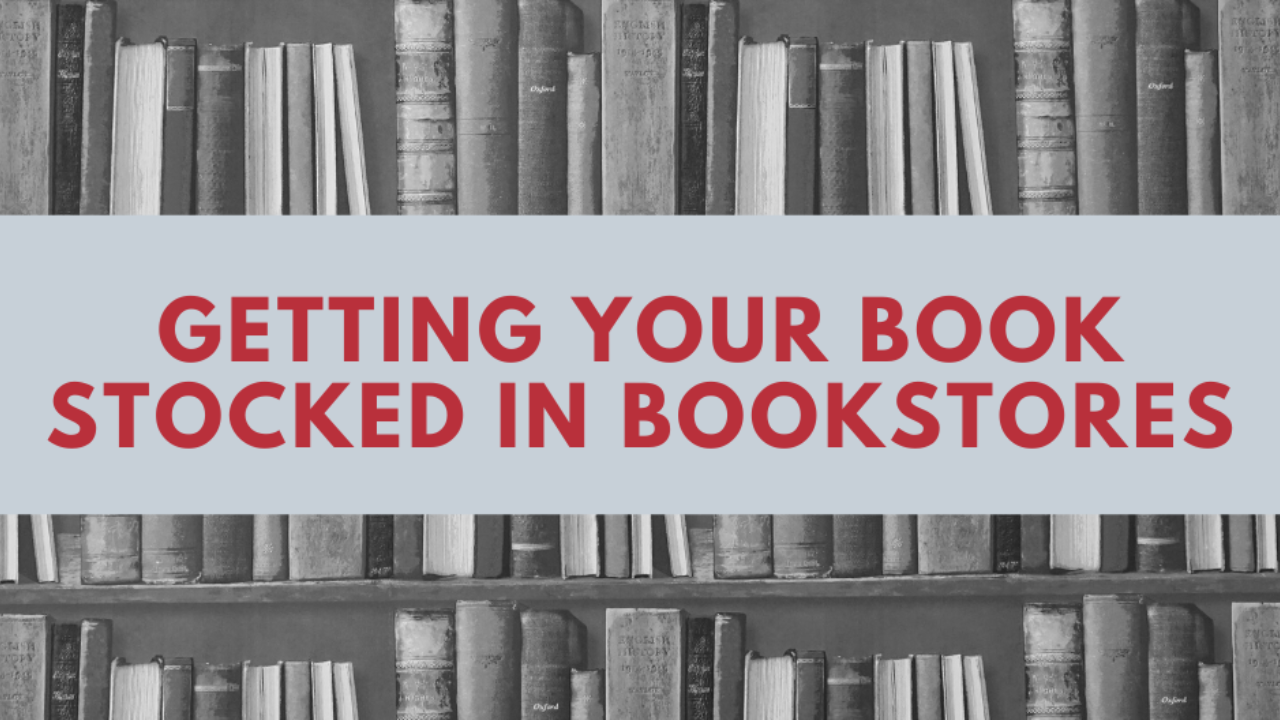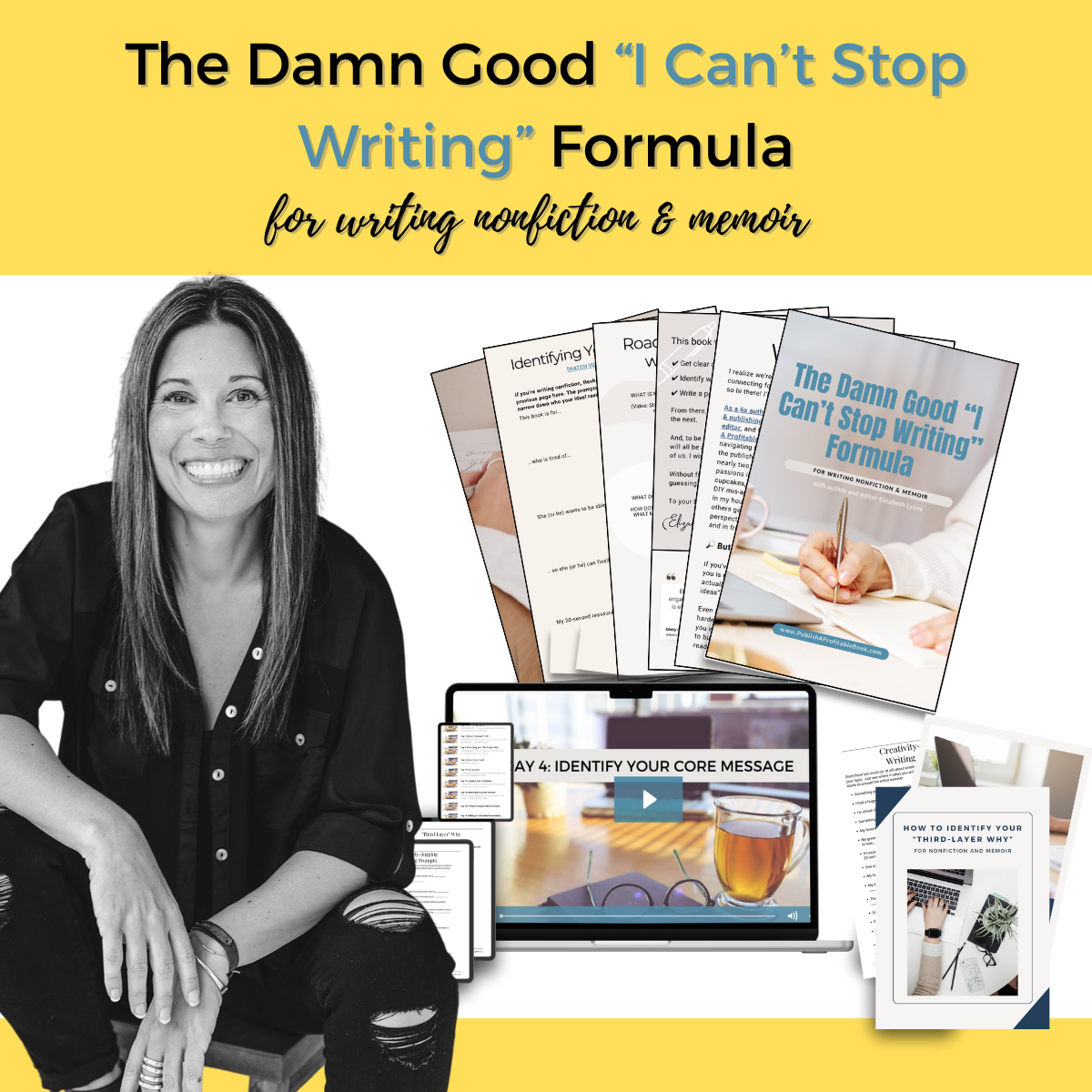Getting Your Self-Published Book into Bookstores (A Reality Check)

“How do I get my book in bookstores?” is a question I’m asked by every single person I’ve ever spoken with who wants to write a book. Every. Single. One.
Some are referring to big box bookstores like Barnes & Noble, some aspire to be carried by their favorite independent bookstore, and some dream of seeing their book in the book section of Target (just after purchasing their flat white latte to enjoy while excitedly putting 89 items they didn't come for into their cart).
The first question to answer isn't, "How do I get the book into bookstores?" (I can give you the how.) The first question is, "Will you even want to once you know how it all really works?"
It’s possible that you won’t meet a person who loves bookstores more than I do. Especially indie bookstores—my devotion to them runs deep.
When it comes to big chain bookstores (Barnes & Noble, Waterstones, etc.) or the book sections of big box stores (Target, Walmart, Costco), however, I love them as a reader.
But as an author? Not so much.
Now, to be clear before I launch into the ins and outs of getting your book stocked in bookstores, being carried by a bookstore is not the validator of whether you have a good book, yet many still believe it to be. There are amazing books gathering dust all over bookstores. Just look at the clearance racks!
Additionally, when I speak of my distaste for the process of getting my books into bookstores as an author, I'm not referring to getting copies in indie bookstores for a signing or for exposure, or even getting books into a big-box store for a signing. Both of those are absolutely doable, and I'll explain how below.
I'm speaking more so about the hope of having hundreds or thousands of books in bookstores across the country.
As an independently published author, I've had my books carried by both Borders (RIP) and Barnes & Noble, as well as several independent bookstores. The truth is, as an independent or self-published author, you do have the ability to get yourself into the same bookstores that traditional publishers can get their authors into. You simply need to know how to do it (and then decide if you actually want to once you understand the inner workings of it all).
Ready to dive in? You might want to grab a coffee, a brownie, or a stiff drink. This part of the industry can get a little confusing, but I’m here to help you make sense of it.
FACT 1: YOU NEED A WHOLESALER
Bookstores (the big ones, and most of the independents) insist on buying from a wholesaler. The main wholesaler in the U.S. is Ingram. Ingram offers bookstores two primary benefits that nearly every bookstore insists on:
✅ A 55 percent discount
✅ A return policy (typically ninety days).
KDP (Kindle Direct Publishing, Amazon’s self-publishing arm) does not allow for wholesale returns.
So even though KDP alleges that their Expanded Distribution program allows bookstores to order from them, they most often will not because KDP doesn’t allow returns. They also don’t offer the required 55 percent discount.
Further, Amazon is every bookstore’s (and almost every other store’s) greatest competitor. So on principle alone, it’s entirely possible that many bookstores wouldn’t order wholesale from Amazon, even if they were to allow returns and offer the standard 55 percent discount.
The workaround for this for self-published and independently published authors is to upload their books to IngramSpark.
IngramSpark is a division of Lightning Source, a print-on-demand service that provides access to the largest global book distribution network of wholesalers, retailers, and booksellers, including Ingram (and other international wholesalers). Authors are told that they have access to 39,000+ retailers through this distribution network (though in truth, the likelihood of even a smidgen of a fraction of those picking up and stocking a book is quite low).
FACT 2: YOUR BOOK ISN'T STOCKED BY BOOKSTORES AUTOMATICALLY
With over 1 million books published every single year, no bookstore can stock (or even be aware of) the vast majority of them. A bookstore typically becomes aware of new books to stock after a rep from the publisher shares an upcoming release with the decision-maker at the bookstores.
(Yes, there are likely reps you can hire to do this legwork for you, but it's my understanding that decision makers at bookstores like to hear from the author or the publisher. Anyone else is often seen like the "Need an appointment setter?" or "Hey coach! We have a great deal for you" DMs that are interested in little more than your cash (or shelf space!).
If the decision maker at the bookstore agrees to take a chance on a new release, they typically order two copies, which are then placed spine-side-out on the shelf—in other words, not on the front table every author sees immediately upon entering their favorite bookstore and imagines their book sitting atop.
(For reference, that coveted front-of-store table space was available by purchase only, and only the big publishing houses could afford it. It's also no longer for sale by most chain bookstores.)
FACT 3: ONCE STOCKED, THE BOOKS HAVE TO SELL...QUICKLY
Customers have to know your book is in a specific bookstore in order to purchase it. Yes, there are instances where someone just happens upon a book in the “stacks,” but unless the book has gotten solid press, it’s not common.
Once the book is on the bookstore’s shelf, it has 89 days to sell. With the 90-day return policy, any books that haven’t sold after 89 days will be returned to the distributor or destroyed (which is why most independent publishers that have a financial interest in sales don’t pay author royalties until ninety days post-sale). In some cases, they may be put on the sale rack if the bookseller believes they can recoup some of their investment.
When I had books being sold by Borders, the pressure I felt to know what bookstores were carrying my books so that I could let people know almost made me lose my mind. The books almost inevitably were returned to the distributor every 89 days, and the shipping cost both ways was born by yours truly.
In the end, it cost me money to have books in the big bookstores, and trying to understand the accounting ledger sent to me from my distributor was an absolute nightmare.
Obviously, if you’re with a traditional publisher and they can get your book stocked in the bookstores, you go with it. If sales begin to dip, so will orders from the booksellers until you’re primarily selling via Amazon or some other method.
Love ‘em or hate ‘em, it's reported that 60-80% of consumers still purchase their books from Amazon—sometimes even when they’re in the bookstore! I hate to admit it, but I’ve found books that looked interesting in a big box bookstore, and if I didn’t feel like I had to have it immediately, I pulled up Amazon on my phone, found the book to be significantly less expensive, knew I could have it on my doorstep in two days with Prime shipping, and placed the order—while inside the bookstore. (I do not do this if I’m in an indie bookstore. I’m happy for them to take my money all day long!)
FINAL WORD FOR THOSE INSISTENT ON BEING CARRIED BY BOOKSTORES
If you’re independently or self-published and want to have your books carried by a big-box or independent bookstore (which several of my authors have successfully done), or you wish to have a signing or other event at a local independent bookstore, you can upload your book to IngramSpark, which allows the bookstore to purchase wholesale from Ingram.
You can then become your own salesperson and approach the person in charge at each bookseller, asking them if they'd be willing to stock your book. Any accolades, national press, or sales proof you can provide to bolster the bookseller's confidence in the hope that your book will actually sell and this isn't merely a vanity play on your part will help!
If you want to have a signing at an independent bookstore, they can purchase through Ingram or you can offer to sell copies directly to them (that you purchased at your author pricing from Amazon), offering them the standard 55 percent discount and a willingness to buy back any that haven’t sold after 90 days.
Additionally, many independent bookstores will also carry local authors’ books on consignment, which means that you give them a supply of books and aren’t paid until the books are sold.
IN CONCLUSION...
There's no right or wrong, good or bad when it comes to selling through bookstores.
It's all about knowing how the process works and not falling prey to the myth that your book will automatically be stocked by bookstores just because it's available to them, that they will do any marketing for you, or that bookstores represent the ticket to the private Greek island you've been dying to purchase (and live on alone, obviously).
Ready to self-publish like a pro?
Publish the Damn Book Already shows you exactly (as in, step-by-step) how to self-publish a book that's indistinguishable in quality from books published by "the big guys" (while retaining your rights, maximizing your profits, and shortening your time to market!)
"Publish the Damn Book Already changed the course of my career. I signed up 3 years ago and now have 9 published books that can stand on a shelf with any NYT bestseller. This course provides all you need to publish successfully and professionally, along with unbelievable support. Elizabeth has become my favourite person in the industry!"
—J.L. Martin, author of The Golden Glow Chronicles
LEARN MORE & JOIN US HERE >>
Want to Stay in the Know?
Sign up to receive the latest book industry news and updates!







